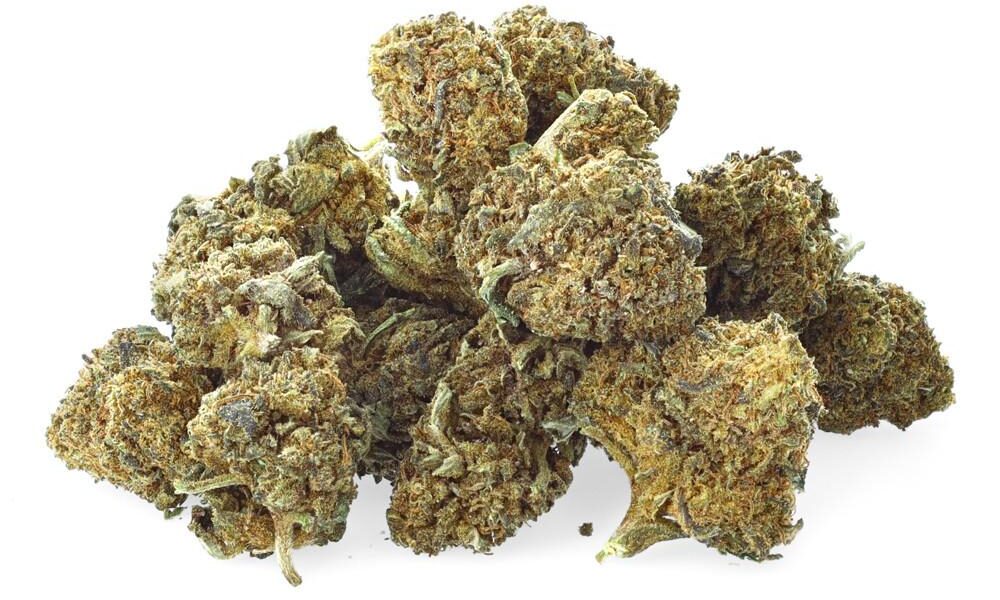How Bad is Weed? A Balanced Exploration of Cannabis’ Impacts
In an ever-evolving landscape of societal norms and legal frameworks, the discourse surrounding cannabis—once shrouded in stigma—has taken on new dimensions. As more states and countries embrace legalization, the conversation shifts from mere prohibition to nuanced examination. But amidst the growing acceptance and claims of therapeutic benefits, a pressing question lingers: how bad is weed? This article aims to navigate the complex terrain of cannabis use, drawing from scientific studies, cultural perspectives, and personal anecdotes to reflect on both the potential perils and the advantages of this controversial plant. By separating myth from fact, we hope to provide a clear-eyed view that empowers readers to understand the multifaceted effects of cannabis—leading them to their own informed conclusions. Prepare for an introspective journey into the heart of one of the most debated substances of our time.
Table of Contents
- Understanding the Health Risks Associated with Cannabis Use
- Exploring the Impact of Marijuana on Mental Health
- The Social and Economic Consequences of Cannabis Legalization
- Strategies for Responsible Use and Harm Reduction
- Q&A
- Wrapping Up
Understanding the Health Risks Associated with Cannabis Use
The increasing acceptance of cannabis use in various regions has led to a surge in popularity, but it is vital to consider the potential health implications. While many users report positive experiences, such as relief from anxiety and chronic pain, the side effects and long-term consequences deserve equal attention. Understanding these risks can help users make informed decisions about their consumption habits. Some potential health concerns associated with cannabis use include:
- Cognitive Impairment: Regular use can interfere with memory and attention.
- Mental Health Issues: There may be a link between heavy use and increased anxiety or depression.
- Dependency Risks: Some users may develop a reliance on cannabis for daily functioning.
- Respiratory Problems: Smoking cannabis can lead to lung issues similar to those caused by tobacco use.
Additionally, cannabis consumption affects individuals differently based on various factors, including genetics, frequency of use, and the method of consumption. Understanding these variations can aid in risk assessment. A comprehensive overview of potential consequences can include:
| Risk Factor | Description |
|---|---|
| Short-Term Effects | Altered senses, mood changes, impaired body movement |
| Long-Term Effects | Persistent cough, increased heart rate, potential mental health decline |
| Withdrawal Symptoms | Insomnia, irritability, loss of appetite |
Exploring the Impact of Marijuana on Mental Health
The relationship between cannabis and mental health is a multifaceted topic that has garnered considerable attention in recent years. Cannabis contains various compounds, the most notable being THC (tetrahydrocannabinol) and CBD (cannabidiol), each contributing differently to mental health outcomes. Research indicates that while some individuals may experience temporary relief from anxiety and depression, others could encounter a worsening of pre-existing conditions or even the emergence of new psychiatric symptoms. This duality creates a complex landscape where the effects of marijuana vary dramatically from person to person.
Several factors influence how marijuana impacts mental health, including frequency of use, dosage, and individual predispositions. It is essential to consider the following points when assessing the potential mental health risks associated with marijuana use:
- Age of first use: Early exposure, particularly during adolescence, may heighten the risk of developing mental health disorders.
- Family history: A genetic predisposition to mental illness can amplify adverse effects when using cannabis.
- Type of cannabis: Strains high in THC might correlate with increased anxiety or paranoia, while those high in CBD often show promise in therapeutic applications.
| Effect | Positive Impact | Negative Impact |
|---|---|---|
| Anxiety | Reduction in symptoms for some users | Increased anxiety in higher doses |
| Depression | Potential mood elevation | Exacerbation of symptoms with regular use |
| Psychosis | – | Higher risk with frequent, high-THC consumption |
The Social and Economic Consequences of Cannabis Legalization
The shift towards cannabis legalization has sparked a significant dialogue regarding its implications on society and the economy. Proponents argue that legalization can lead to a variety of social benefits. Reduction in criminal activity is often highlighted, as decriminalizing cannabis can alleviate the burden on law enforcement and the judicial system. Additionally, increased tax revenues from cannabis sales have proven to bolster local economies and fund public services, such as education and healthcare. This can be particularly transformative for economically challenged regions that have historically struggled with funding and resources. Moreover, the normalization of cannabis use allows for healthier dialogues surrounding addiction and mental health treatment, potentially reducing stigma and promoting responsible consumption.
On the flip side, there are concerns regarding the potential for increased usage, especially among youth, as accessibility grows. Some studies indicate that legalization might inadvertently lead to higher consumption rates, posing health risks and social implications. Furthermore, the impact on workplace productivity has been debated, as companies may face challenges managing employees who may use cannabis during breaks or after hours. To illustrate the potential economic impact, consider the following table, which summarizes key data points from various states post-legalization:
| State | Year of Legalization | Tax Revenue (Year 1) |
|---|---|---|
| Colorado | 2012 | $67 million |
| California | 2016 | $175 million |
| Illinois | 2019 | $52 million |
As communities navigate their own pathways regarding cannabis, the balance between the benefits and drawbacks remains a critical point of consideration. Understanding the full spectrum of effects is essential for making informed decisions about the future of cannabis policy and its role in society.
Strategies for Responsible Use and Harm Reduction
To navigate the complexities of cannabis use responsibly, individuals should be equipped with a variety of strategies that emphasize moderation and mindfulness. Consider the following guidelines to minimize risks:
- Know Your Strain: Different cannabis strains have varying effects. Familiarize yourself with THC and CBD levels to choose products that align with your needs.
- Mind Your Setting: Ensure you are in a safe and comfortable environment when consuming cannabis to enhance your experience and reduce anxiety.
- Limit Frequency: Regular use can lead to tolerance and potential dependency. Set boundaries on how often you partake.
- Educate Yourself: Stay informed about the legal status of cannabis in your area and the health implications of use.
Harm reduction strategies can also help mitigate potential negative outcomes associated with cannabis use. It’s essential to adopt practices that promote safety and well-being:
- Start Low, Go Slow: If new to cannabis, begin with a low dosage and gradually increase to assess your tolerance.
- Stay Hydrated: Drink plenty of water before and during use to help counteract dehydration and dry mouth.
- Be Mindful of Interactions: Avoid combining cannabis with other substances such as alcohol or prescription medications unless advised by a healthcare professional.
- Take Breaks: Incorporate days off between uses to help reset your tolerance and enhance overall enjoyment.
Q&A
How Bad is Weed? Your Questions Answered
Q1: Is marijuana really as harmful as some people claim?
A1: The answer isn’t straightforward. Like many substances, the impact of marijuana varies depending on several factors, including how it’s used, the amounts consumed, and individual health conditions. For some, it may have therapeutic benefits, while others could experience negative effects. Scientific studies indicate both potential harms and benefits, which makes understanding it quite nuanced.
Q2: What are the short-term effects of using marijuana?
A2: Short-term effects can include euphoria, relaxation, and enhanced sensory perception, but they can also bring about anxiety, paranoia, or impaired memory and motor coordination. Imagine enjoying a concert — the music feels sublime — but if you’ve had too much, that enjoyment could quickly turn into discomfort, making the experience less enjoyable overall.
Q3: Does marijuana have any long-term effects on health?
A3: Long-term marijuana use can lead to various health issues, particularly related to lung health if smoked. Research suggests potential risks for mental health, especially in individuals predisposed to certain conditions. However, marijuana might also play a role in pain management and anxiety relief for some, creating a complex picture that is still under investigation.
Q4: What about addiction? Is it possible to become addicted to weed?
A4: Yes, marijuana can lead to dependence for a small percentage of users, estimated at about 9% overall. This number increases with daily use. The experience of withdrawal can be uncomfortable for some, resembling other substance dependencies, although it is generally milder than withdrawals associated with alcohol or opioids.
Q5: How does marijuana affect mental health?
A5: The relationship between marijuana and mental health is intricate. While some users turn to weed for relief from anxiety or depression, research has shown that heavy use, particularly in adolescence, may increase the risk of developing mental health issues, including psychosis. It’s essential to weigh the risks and benefits on a case-by-case basis.
Q6: Is it possible to use marijuana responsibly?
A6: Absolutely! Many individuals utilize marijuana for medicinal purposes or recreational enjoyment without adverse effects. Responsible use involves understanding personal limits, choosing the right strains, opting for safer consumption methods, and being mindful of the legal regulations in your area.
Q7: What should someone consider before using marijuana?
A7: It’s crucial to assess personal health conditions, family history, and current medications. Being informed about the risks, potential benefits, and your local laws can help formulate an educated approach. Consulting with a healthcare provider can also provide clarity, especially for individuals with pre-existing conditions.
Q8: how bad is weed?
A8: The verdict isn’t a simple “good” or “bad.” Marijuana’s effects vary greatly from person to person, and its social and cultural contexts play significant roles in its perception. Like any substance, mindfulness and moderation are key. By understanding the multifaceted nature of weed, individuals can make informed decisions that are right for them.
—
Isn’t it interesting how one little plant can spark such diverse discussions? As society grows and evolves, so does our dialogue about marijuana. Whatever your stance, it’s clear that knowledge remains a powerful tool in navigating this complex topic.
Wrapping Up
As we draw the curtain on our exploration of cannabis—its effects, misconceptions, and societal implications—it becomes clear that the narrative surrounding weed is far from black and white. While some may view it as a harmless companion for relaxation and creativity, others raise valid concerns about its potential pitfalls, especially when used irresponsibly or in excess.
Ultimately, understanding the complexities of cannabis requires a balanced perspective that acknowledges both its potential benefits and risks. As legalization efforts spread and research expands, the conversation surrounding weed continues to evolve, inviting us to consider not just how it affects individuals, but how it shapes our communities and cultures.
In navigating this multifaceted issue, let’s commit to informed dialogue, guided by evidence and empathy. After all, the better we understand the nuances of weed, the better equipped we are to make choices that reflect our values, our health, and our society as a whole. So, as we close this chapter, let us keep the conversation going, exploring both the light and shadow that this enigmatic plant casts on our lives.



